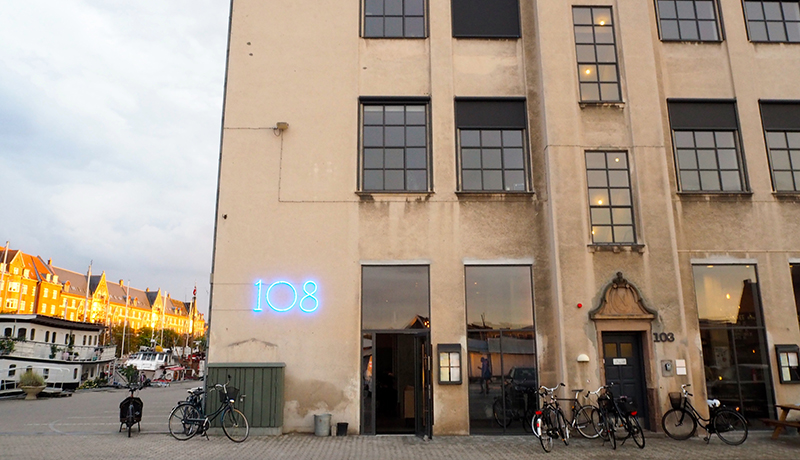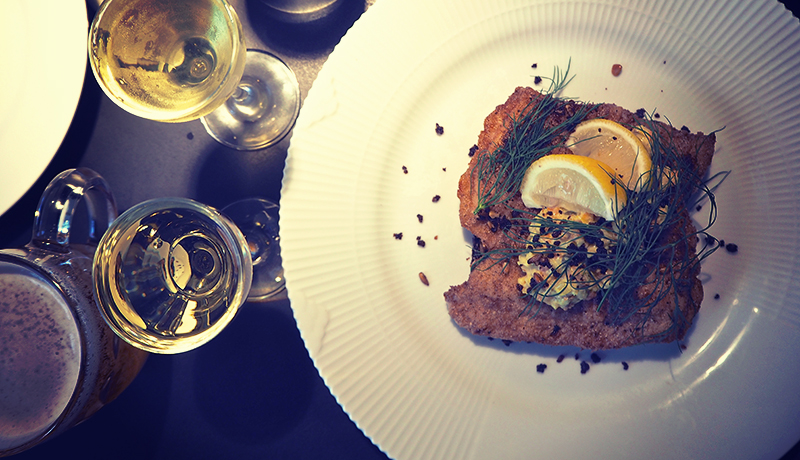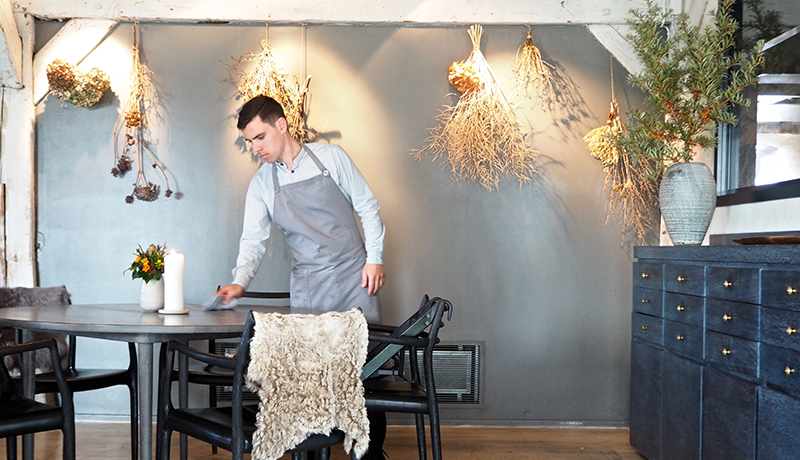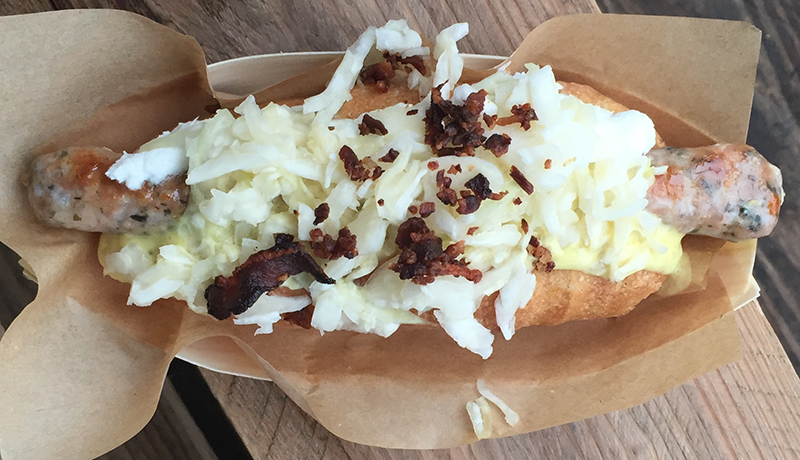

Øl & Brød
Photo Courtesy of Veronica Meewes
Each year, Copenhagen seems to garner a bit more attention as a major food city — and for good reason. The seaside Scandinavian destination is home to a diverse edible bounty, from unique flora-like sea buckthorn, elderflower and gooseberries to exquisitely fresh seafood like turbot, mackerel, crab and lobster caught from the surrounding North and Baltic Seas.
In the past decade, a group of young Danish chefs has put the city on the culinary map with innovative and conscientious use of native plants and proteins. Chef René Redzepi is undoubtedly responsible for kicking off the new Nordic food movement when he opened Noma in 2003. Set in an old canal-facing whaling house, the restaurant would go on to become world-renowned for Redzepi’s renegade-but-refined use of foraged ingredients, an advanced fermentation program and front-of-house interaction with the chefs. Redzepi will close Noma at the end of 2016 to prepare for his latest project, a restaurant with an on-site urban farm and three contrasting seasonal menus.

Noma, Photo Courtesy of Veronica Meewes
Some of the city’s best and most acclaimed restaurants were imagined and conceived by Noma alums. Former sous chef Søren Ledet went on to open Geranium, a multi-sensory chef’s-counter experience with panoramic city views.
Former chef de cuisine Matt Orlando launched gold-organic-certified Amass, where local ingredients (some grown in the kitchen garden) are stars of the show.
Torsten Bachmann Vilgaard, the former head of R&D in Noma’s lab, is now the head chef at Studio, where he serves a nature-inspired tasting menu with a harbor view and attached jazz club.
Former sous chef Christian Puglisi went on to open the sleek and minimal Relæ, where vegetables take center stage in a four- or seven-course menu.
Despite the saturation of fine dining in Copenhagen, the food scene is as approachable as its residents are effortlessly stylish — and both are delightfully unpretentious. You won’t find a dress code at any of these restaurants, and you’ll notice that diners’ relaxed but fashionable ensembles are conducive to hopping on one of the city’s ubiquitous bicycles after eating. (After all, cycling is the city’s primary mode of transportation.)

108, Photo Courtesy of Veronica Meewes
This relaxed approach complements a new trend: Many of the city’s top chefs are opening even more casual concepts, which will continue to widen the gastronomic net. Puglisi was one of the first to start this trend, opening Manfreds, a natural wine bar with an all-organic menu, across the street from Relæ in 2011. He followed that up with pizza and charcuterie restaurant Baest and the adjacent bakery and café Mirabelle in 2014.
The team behind Kadeau, which celebrates the nearby culinary island of Bornholm, offers an abbreviated (two to four courses as opposed to 20) tasting menu at Pony.
Even Redzepi made waves this summer by opening 108, which exudes the same spirit of Noma for a lower price tag (and without the average yearlong wait for a table).
In addition to this wealth of incredible restaurants, there are plenty of other essential stops for food lovers visiting Copenhagen. Torvehallerne is the city’s centrally located food market, with over 80 different stalls selling local products, fresh meats and seafood, produce and prepared foods. Coffee Collective roasts and brews some of the best coffee in town; Grød specializes in sweet and savory porridge; former Noma pastry chef Rosio Sanchez serves tacos and paletas at Hija de Sanchez; and Summerbird sells beloved local sweets like flødebollen (Danish cream puffs), braendte mandler (candied almonds) and licorice truffles.

A Nordic Hot Dog, Photo Courtesy of Veronica Meewes
Located on the harbor in a former newspaper warehouse is Copenhagen Street Food, a dining hall with another 36 delightful stalls. The cuisine here spans from Moroccan flatbread and British pancakes to pork- and duck-focused menus. This is a great spot to try an essential Nordic hot dog, which is an extra long sausage topped with mustard, remoulade, onion, ketchup, sliced dill pickles and fried onions.
No epicure should leave Copenhagen without experiencing a traditional Danish lunch of smørrebrød and snaps. Smørrebrød is an open-faced sandwich made with sliced buttered rugbrød (Danish rye) that’s topped with accoutrements like curried or pickled herring, cured salmon, smoked eel, mayonnaise, sliced boiled eggs, roast beef with remoulade or beef tartare with egg. Since 1877, Restaurant Schonneman has been serving smørrebrød via two daily seatings, with over 140 types of snaps (herb-infused aquavit) to choose from. Delivered in delicate stemmed glasses, snaps are typically sipped between convivial exclamations of “skål!” (Danish for “cheers”) and acts as the perfect palate cleanser between rich bites of smørrebrød.
In the past few years, restaurateurs are opening modern restaurants that honor the Danish lunch tradition. Mikkeller, the Danish microbrewery with a cult following, opened Øl & Brød last year, serving both traditional and modern interpretations of smørrebrød paired with microbrews and house-made snaps. Just this summer, the team behind the acclaimed Formel B opened Restaurant Palaegade, preparing elegant renditions of smørrebrød for lunch and classic Danish entrees for dinner plus beer, aquavit and wine handpicked from the best producers, both small and large.
Danish winters are cold and dark, so the best time to visit this Scandinavian gem is from April, when the cherry blossoms bloom, to September, when cool autumnal breezes flow through the streets. Sandwiched between all of that is August’s Copenhagen Cooking & Food Festival, an event that takes over the city with pop-ups, cooking classes, special dinners and street fun. Though there’s no better time for food lovers to book a trip to Copenhagen, enough permanent culinary excitement exists around the city to make a visit any time of the year taste great.
